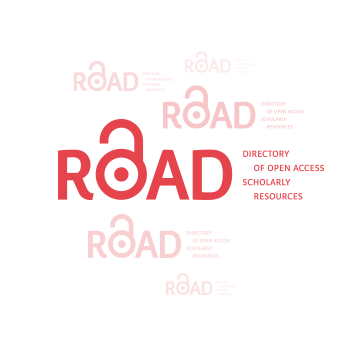آثار جائحه كورونا على التخطيط العمراني ومستقبل المدن اليمنية- دراسة حاله لمدينه ذمار
DOI:
https://doi.org/10.59994/pau.2024.3.1الكلمات المفتاحية:
التخطيط العمراني، كورونا، تخطيط المدن، مستقبل المدن اليمنية، ذمارالملخص
تهدف هذه الدراسة إلى استكشاف آثار جائحة كورونا على التخطيط العمراني ومستقبل المدن اليمنية، مع التركيز على العوامل التي تجعل المدن أكثر عرضة لانتشار الفيروس، مثل: الكثافة السكانية والتفاعلات الاجتماعية. كما ناقشت الدراسة التدابير التي اتخذتها المدن للتخفيف من تأثير الوباء، واستعرضت تجارب بعض الدول في مرحلة ما بعد الجائحة، ومنها دراسة حالة لمدينه ذمار اليمنية وتأثرها بفيروس كورونا وتصوراتها للتخطيط العمراني المستقبلي. استخدمت الدراسة المنهج الاستقرائي والمنهج التحليلي؛ نظراً لطبيعة الدراسة وملاءمتها لاستكشاف وفهم الظواهر المعقدة المتعلقة بجائحة كورونا والتخطيط العمراني. كشفت جائحة كورونا عن الدور الحاسم للتخطيط العمراني في مواجهة الأزمات الصحية، بشكل عام، وأسهمت الجائحة في ضرورة إعادة التفكير في أسلوب حياة الإنسان الحديث ورفاهيته. كما وفرت أزمة كوفيد-19 فرصة ممتازة للمخططين وصانعي السياسات، لاتخاذ إجراءات تحويلية نحو إنشاء مدن أكثر عدلاً ومرونةً واستدامةً، وضرورة توسيع مناطق المشاة، وإنشاء المناطق الخضراء الآمنة، وتوفير المساحات العامة المفتوحة داخل المدن، وتزويد الأحياء السكنية بالمساحات الخضراء والترفيهية والحدائق المتاحة للجميع. هذه الدراسة سلطت الضوء على أهمية التخطيط العمراني في ظل الأزمات الصحية، وتُقدِّم رؤىً حول كيفية تعزيز مرونة المدن بشكل عام، والمدن اليمنية بشكل خاص، واستدامتها في المستقبل.
التنزيلات
المراجع
المراجع العربية
السدحان، عبدالله. (2010). الآثار الاجتماعيه للتوسع العمراني في المدينة الخليجية. الدوحة، وزارة الأوقاف والشؤون الإسلامية.
بلغليفي، نوال؛ قوت، سهام. (2016). البعد الإيكولوجي في التخطيط العمراني بالمدينة الصحراوية (بلدية الزاوية العابدية أنموذجا، دراسة ميدانية بمدينة تقرت). مجلة العلوم الإنسانية والاجتماعية، عدد خاص بالملتقى الدولي تحولات المدينة الصحراوية- تقاطع مقاربات حول التحول الاجتماعي والممارسات الحضرية-، 255-234. DOI: https://doi.org/10.35156/1173-000-022-025
المراجع العربية بنظام الرومنة:
Alsdhan, 'Ebdallh. (2010). alathar alajtma'eyh lltws'e al'emrany fy almdynh alkhlyjyh. aldwhh, wzarh alawqaf walsh'ewn aleslamyh.
Blghlyfy, Nwal؛ Qwt, Sham. (2016). alb'ed aleykwlwjy fy altkhtyt al'emrany balmdynh alshrawyh (bldyh alzawyh al'eabdyh anmwdja, drash mydanyh bmdynh tqrt). mjlh al'elwm alensanyh walajtma'eyh, 'edd khas balmltqa aldwly thwlat almdynh alshrawyh- tqat'e mqarbat hwl althwl alajtma'ey walmmarsat alhdryh-, 255-234.
المراجع الأجنبية
Abdulwasaa, M. A., Abdo, M. S., Shah, K., Nofal, T. A., Panchal, S. K., Kawale, S. V., & Abdel-Aty, A.-H. (2021). Fractal-fractional mathematical modeling and forecasting of new cases and deaths of COVID-19 epidemic outbreaks in India. Results in Physics, 20, 103702 . DOI: https://doi.org/10.1016/j.rinp.2020.103702
Acuto, M. (2020). Engaging with global urban governance in the midst of a crisis. Dialogues in Human Geography, 10(2), 221-224. doi:10.1177/2043820620934232. DOI: https://doi.org/10.1177/2043820620934232
Awada, M., Becerik-Gerber, B., White, E., Hoque, S., O'Neill, Z., Pedrielli, G (2022). Occupant health in buildings: Impact of the COVID-19 pandemic on the opinions of building professionals and implications on research. Building and Environment, 207, 108440. DOI: https://doi.org/10.1016/j.buildenv.2021.108440
Bao, L., & Hu, D. (2021). Reflections on the Design of Urban Community and Residential Buildings in China in the Post-epidemic Era. Festival dell'Architettura Magazine, 120-126.
Bolleter, J., Edwards, N., Cameron, R., Duckworth, A., Freestone, R., Foster, S., & Hooper, P. (2022). Implications of the COVID-19 pandemic: Canvassing opinion from planning professionals. Planning practice & research, 37(1), 13-34. DOI: https://doi.org/10.1080/02697459.2021.1905991
Buheji, M., Vovk Korže, A., Eidan, S., Abdulkareem, T., Perepelkin, N., Mavric, B., . . . Buheji, A. (2020). Optimising pandemic response through self-sufficiency-a review paper. American Journal of Economics, 10(5), 277-283 DOI: https://doi.org/10.5923/j.economics.20201005.02
Cartenì, A., Di Francesco, L., & Martino, M. (2020). How mobility habits influenced the spread of the COVID-19 pandemic: Results from the Italian case study. Science of the total environment, 741, 140489. DOI: https://doi.org/10.1016/j.scitotenv.2020.140489
Connolly, C., Keil, R., & Ali, S. H. (2021). Extended urbanisation and the spatialities of infectious disease: Demographic change, infrastructure and governance. Urban studies, 58(2), 245-263. DOI: https://doi.org/10.1177/0042098020910873
Eltarabily, S., & Elghezanwy, D. (2020). Post-pandemic cities-the impact of COVID-19 on cities and urban design. Architecture research, 10(3), 75-84.
Fakhouri, L. A., & Haddad, N. A. (2017). Aspects of the architectural and urban heritage: From registers to conservation for adaptive and modern use at the historic cores of salt and Irbid, Jordan. ArchNet-IJAR: International Journal of Architectural Research, 11(2), 190. DOI: https://doi.org/10.26687/archnet-ijar.v11i2.1256
Gao, J., & Zhang, P. (2022). Mechanisms of the Chinese Government's Efforts to Fight COVID-19: Integration of Top-Down Interventions and Local Governance. Health security, 20(4), 348-356. DOI: https://doi.org/10.1089/hs.2021.0161
Hamidi, S., Sabouri, S., & Ewing, R. (2020). Does density aggravate the COVID-19 pandemic? Early findings and lessons for planners. Journal of the American Planning Association, 86(4), 495-509. DOI: https://doi.org/10.1080/01944363.2020.1777891
Honey-Rosés, J., Anguelovski, I., Chireh, V. K., Daher, C., Konijnendijk van den Bosch, C., Litt, J. S., . . . Oscilowicz, E. (2021). The impact of COVID-19 on public space: an early review of the emerging questions–design, perceptions and inequities. Cities & health, 5(sup1), S263-S279. DOI: https://doi.org/10.1080/23748834.2020.1780074
Huang, J., Kwan, M.-P., Kan, Z., Wong, M. S., Kwok, C. Y. T., & Yu, X. (2020). Investigating the relationship between the built environment and relative risk of COVID-19 in Hong Kong. ISPRS International Journal of Geo-Information, 9(11), 624. DOI: https://doi.org/10.3390/ijgi9110624
Hume, I., Summers, D., & Cavagnaro, T. (2021). Self-sufficiency through urban agriculture: Nice idea or plausible reality? Sustainable cities and society, 68, 102770. DOI: https://doi.org/10.1016/j.scs.2021.102770
Jayaweera, M., Perera, H., Gunawardana, B., & Manatunge, J. (2020). (Transmission of COVID-19 virus by droplets and aerosols: A critical review on the unresolved dichotomy. Environmental research, 188, 109819. DOI: https://doi.org/10.1016/j.envres.2020.109819
Kim, M. S. (2020). Seoul’s radical experiment in digital contact tracing. The New Yorker, 17.
Megahed, N. A., & Ghoneim, E. M. (2020). Antivirus-built environment: Lessons learned from Covid-19 pandemic. Sustainable cities and society, 61, 102350. DOI: https://doi.org/10.1016/j.scs.2020.102350
Morawska, L., & Cao, J. (2020). Airborne transmission of SARS-CoV-2: The world should face the reality. Environment international, 139, 105730. DOI: https://doi.org/10.1016/j.envint.2020.105730
Nieuwenhuijsen, M., & Khreis, H. (2019). Integrating human health into the Urban Development and Transport Planning Agenda: A summary and final conclusions: Springer. DOI: https://doi.org/10.1007/978-3-319-74983-9
Qiu, Y., Chen, X., & Shi, W. (2020). Impacts of social and economic factors on the transmission of coronavirus disease 2019 (COVID-19) in China. Journal of population economics, 33, 1127-1172. DOI: https://doi.org/10.1007/s00148-020-00778-2
Reinwald, F., Haluza, D., Pitha, U., & Stangl, R. (2021). Urban green infrastructure and green open spaces: An issue of social fairness in times of COVID-19 crisis. Sustainability, 13(19), 10606. DOI: https://doi.org/10.3390/su131910606
Rume, T., & Islam, S. D.-U. (2020). Environmental effects of COVID-19 pandemic and potential strategies of sustainability. Heliyon, 6(9). DOI: https://doi.org/10.1016/j.heliyon.2020.e04965
Sharifi, A. (2019). Resilient urban forms: A review of literature on streets and street networks. Building and Environment, 147, 171-187. DOI: https://doi.org/10.1016/j.buildenv.2018.09.040
Sharifi, A., & Khavarian-Garmsir, A. R. (2020). The COVID-19 pandemic: Impacts on cities and major lessons for urban planning, design, and management. Science of the total environment, 749, 142391. DOI: https://doi.org/10.1016/j.scitotenv.2020.142391
Tekalign, K. (2020). Probable Factors Contributing to the Fast Spread of the Novel Coronavirus (COVID-19) in Ethiopia. DOI: https://doi.org/10.23937/2474-3658/1510169
التنزيلات
منشور
كيفية الاقتباس
إصدار
القسم
الرخصة
الحقوق الفكرية (c) 2024 مجلة جامعة فلسطين الأهلية للبحوث والدراسات

هذا العمل مرخص بموجب Creative Commons Attribution 4.0 International License.
مجلة جامعة فلسطين الاهلية للبحوث والدراسات تعتمد رخصة نَسب المُصنَّف 4.0 دولي (CC BY 4.0)











